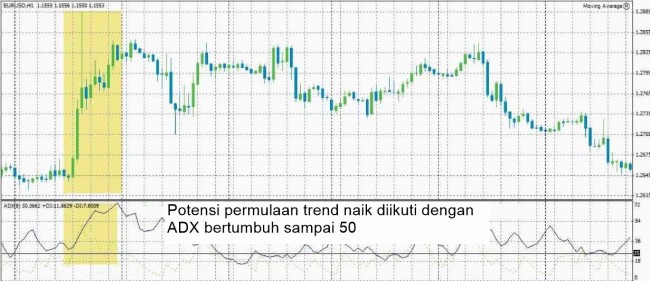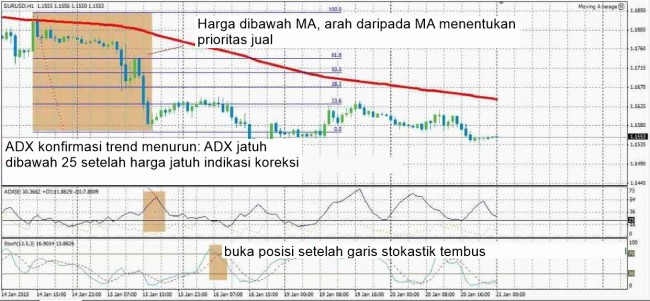
No trading system is able to deliver only correct predictions, and failures are inevitable. If you mindlessly enter the market by all the signals provided, the efficiency of the trading system will decrease. This is why traders use various kinds of filters that allow avoiding "unreliable signals".
The term "filter" refers to a certain rule (condition), which has to be present before the conclusion of the deal. We can distinguish several types of filters:
- Filtering indicators. Typically, several trading instruments are used in indicator trading, in which case one is the indicators is the main signal generator, and 2-3 others act as a sieve that weeds out the false signals.
- Time filters. Relevant when trading on the news and when the time plays a crucial role.
- Graphic and candlestick analysis implies strict adherence of the market situation to a certain pattern. Only in this case the deal is concluded.
- Combined. Both indicators and chart patterns are most often used in trading, and news release is also taken into account. Therefore, several types of filters are used.
As for the indicator trading, in this case virtually any indicator may act as a filter. It all depends on the trading system and which kind of tools was selected for the main supplier of signals, and which – to weed out the false ones.
Filtering indicator as the basis of the trading system
The role of such tools is not just to weed out a few signals from the crowd. Tools in this category may also be used for general assessment of the situation, being the foundation of the trading system.
A conventional moving average can be an example, which, despite its apparent simplicity, is used in many trading systems to identify a trend. A set of MA can turn into a self-sufficient trading system – just think of the Alligator by Bill Williams.
Another popular category of filters is a variety of oscillators. The Stochastic divides the price movement to the oversold/overbought areas and is also used as a filter.
Many modifications of indicators built into MT4 are quite popular as well. The principle of operation is the same, but the display of the information is a bit different. So, the Trend Filter indicator has no division for the oversold/overbought areas, but the color of the indicator will help to classify market conditions. Red and green are respectively the flat after descending and ascending trend, and yellow indicates a trend in the direction of the indicator.
Filtering indicators for all occasions
It is simply impossible to mention all the popular filters in one article, so the focus is on a few universal tools. They can easily fit into any trading system and only enhance its effectiveness.
Moving averages can be regarded as the undisputed leader in the rating of the filtering indicators. As a rule, they act as support/resistance levels, the trend is determined given the position of the price with respect to the MA. The period depends on the working timeframe.
The standard ADX built into the trading platform can help filter out the areas where the market has no clear movement, MA does not help in this case. Dependence is simple – the bigger the value of the indicator, the stronger the trend is observed. ADX value of 25 is a mark of the border.
In addition to the mathematical methods of analysis of the market, psychology is also important, so it would be nice to add an indicator to the list of filters that displays the mood in the market (the ratio of bulls/bears). Of course, the majority opinion does not mean that the price will move in the right direction, but you need to consider this component.
In addition, you need to take the time of release of vital statistics into account if trading is conducted on a small timeframe and not on one pair: in this case you need the filtering indicators that duplicate economic calendar directly in the terminal window. At calm trading, you can monitor the news background in manual mode.
Building a trading system using filters
Most often traders use both indicators and graphical analysis tools in trading, so attention is focused on the combined trading system in the example. The entry into the market in supposed in the direction of the trend after the completion of the corrective movement.
Fibonacci levels and graphical representations are supposed to be used as the main "signal generator". Indicators will only play a supporting role. When compiling the rules for entry into the market, you will need to solve the following tasks:
- Determine whether there is the trend movement in the market at the moment, and determine its direction if any.
- The standard Fibonacci levels need a filter confirming the rebound of the price and completion of correction.
To solve the first task, you can use the filtering indicators ADX and MA and confirm the completion of the correction with Stochastic. You can work on the proposed system in the following order:
- First the presence and direction of the trend are identified.
- Then, Fibonacci levels are stretched on the last strong movement.
- Close to important levels (38.2% and 61.8% are particularly important), you simply watch the price and Stochastic readings.
For the transaction to buy it is necessary that the price after a strong upward movement has adjusted to the nearest level and Stochastic lines crossed in the oversold area. The rules are opposite for short positions. In order to enter the market as a sniper, you can monitor the situation on smaller timeframes.
Summing-up
You should not consider the filtering indicators as a panacea of all failures. This instrument is only a supporting element, which if used will increase the efficiency of the trading system. If a trading algorithm has initially had a hidden flaw, the indicators will not help.
You also need to understand that absolutely any indicator can act as a filter, everything depends on how the trader will use it. The Ichimoku indicator can be used to identify a trend and act as a separate trading system.
The number of filters is no less important either, 1-3 indicators of any trading system is more than enough, otherwise trader simply risks to get lost in the many conflicting signals and trading efficiency is likely to fall.







